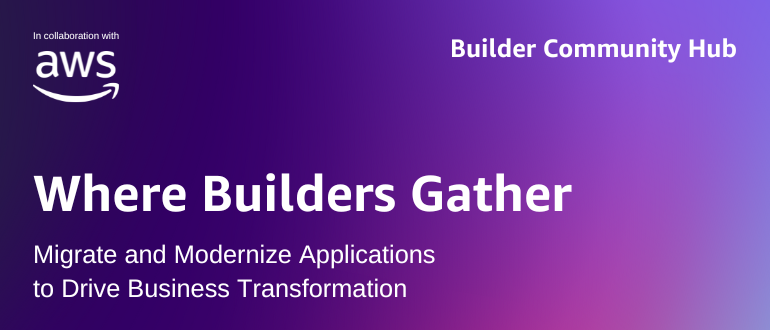Source: securityboulevard.com – Author: Amy Cohn
Why does robust IAM matter in our pursuit of independent cybersecurity?
Coupled with the increased complexity of infrastructure and applications, has highlighted the need for advanced, independent cybersecurity measures. While traditional security methods remain essential, they often fall short in addressing the full scope. A critical component often overlooked in these strategies is Identity and Access Management (IAM), particularly Non-Human Identities (NHIs) and Secrets management. But why such emphasis on robust IAM systems?
Understanding IAM in the Modern Cybersecurity Landscape
Simply put, IAM is a process that ensures the right entities (human or non-human) have access to the right resources in the right contexts. Modern applications often involve multiple NHIs, such as service accounts, robots, and APIs, that communicate with each other without human intervention. These NHIs use “Secrets” (unique encrypted identifiers such as keys or tokens) to gain access to servers and applications.
While IAM may seem straightforward, managing NHIs and their secrets presents unique challenges. Along with an increasing number of entities comes an increase in potential security vulnerabilities. Without robust IAM systems, organizations face a higher risk of unauthorized access, data breaches, and non-compliance with regulations.
Securing Machine Identities and Their Secrets
The importance of human identity security is undisputed, yet the security of NHIs often gets overlooked. NHIs, like human entities, require robust IAM systems for safe online navigation. The management of NHIs and secrets involves securing both the identities (the “tourist”) and their access credentials (the “passport”), as well as monitoring their behaviors within the system.
Addressing all lifecycle stages, from discovery and classification to threat detection and remediation, is essential in NHI management. This holistic approach offers advantages over point solutions such as secret scanners, which typically provide limited protection. With an NHI management platform, organizations gain insights into ownership, permissions, usage patterns, and potential vulnerabilities – allowing for context-aware security.
Benefits of Robust IAM Systems
With a comprehensive NHI management strategy in place, organizations can achieve independent cybersecurity. Some notable benefits include:
* Reduced Risk: Proactively identifying and mitigating security risks helps prevent breaches and data leaks.
* Improved Compliance: Ensuring policy enforcement and maintaining audit trails aids with regulatory compliance.
* Increased Efficiency: Automation of NHI and secrets management allows teams to focus on strategic initiatives.
* Enhanced Visibility and Control: A centralized view enables effective access management and governance.
* Cost Savings: Automated secrets rotation and NHI decommissioning reduce operational costs.
Moving Beyond Traditional IAM
While traditional IAM focuses on human entities, the evolving landscape demands a shift toward incorporating NHIs. Research on data analysis shows an increasing number of organizations recognizing this need.
To further explore the importance of NHIs and secrets management, consider reading IAST vs. RASP and Their Blindspots in Non-Human Identity Management. This piece delves deeper into the blindspots and challenges related to NHIs in cybersecurity.
Achieving independence in cybersecurity requires a strategic approach to IAM. With robust IAM systems, organizations can protect their digital boundaries while enabling secure communication between human and non-human entities. This is not an end but an essential step in creating a secure digital environment.
The Importance of Robust Identity and Access Management
Does enhanced security, risk mitigation, and operational efficiency sound appealing? Organizations are investing in advanced Identity and Access Management (IAM) solutions, recognizing their critical role in minimizing security risks, improving compliance, and ensuring efficient operations. However, security is an ever-evolving landscape and protecting human identities alone is not sufficient for a holistic security approach. The spotlight now reaches non-human identities (NHIs) and secrets management, recognizing the indispensable value this kind of management provides.
Expand the Definition of IAM
Traditionally, IAM procedures have been focused on human identities. However, the advancement of technology and the rise of digital transformation has broadened the definition of IAM, allowing for inclusion and heightened understanding of NHIs. Non-human identities include automated scripts, bots, machines, and APIs, each of which plays a significant role in your business operations.
These components, although not human, have access to sensitive information within your organization, hence necessitating efficient and effective management. If left unchecked or unmanaged, these NHIs have the potential to pose significant security threats, including data breaches or leaks. It’s not an exaggeration to say that the security of NHIs or machine identities and secrets management is as important as human identity security.
Managing NHIs: Why should organizations care?
NHIs are not humans, but they play a critical role within your security infrastructure. They perform automated tasks, run scripts, and interact with other machines within your network.
However, NHIs, if left unprotected, have the potential to cause significant damage to your organization. Cybercriminals could exploit these identities, gain unauthorized access to sensitive data, or even interrupt critical business operations.
One potential challenge is the speed at which these NHIs operate. Automated scripts and bots work faster than humans, meaning security breaches can occur rapidly, often before manual intervention can take effect. Furthermore, with the ongoing rapid digital transformation, the complexity and sheer number of NHIs within organizations are continually increasing.
Research suggests that NHIs are expected to outnumber human identities within organizations. With this estimation, it is clearer than ever before why protecting NHIs through robust IAM solutions is a necessity, not a luxury. As organizations embrace the potentials of AI, machine learning, and automation, the need for NHI and secrets management is only set to increase.
The Future of Identity and Access Management
The process of modern IAM is not a static one – it’s an ever-evolving aspect that needs continuous optimization, enhancing both human and non-human identities and ensuring their aligned and integrated functionality. Innovative technologies are expected to further revolutionize the IAM realm with alerts integration, predictive analysis, and even more precise context-aware security.
IAM solutions that enable organizations to proactively manage both human and non-human identities will become more prevalent. With strengthened systems, businesses will achieve greater compliance, reduced security risks, and improved operational efficiency.
It is no longer adequate to have separate strategies for human and non-human identities. Organizations must note that a truly effective IAM strategy is comprehensive, encompassing both human and non-human identities, and consider this as a launch point rather than a final stride in implementing superior cybersecurity measures.
To quote an expert from the field, Northwestern Mutual’s IAM Strategy Lead emphasized that a well-structured IAM is no longer a ‘nice-to-have’ but a ‘must-have’.
While the subject of IAM for NHIs may seem overwhelming, comprehensive understanding and adequate management systems can help organizations thrive amidst the digital transformation, ensuring a secure pathway for both its human and non-human entities.
Identity and access management is a growing focal point in modern cybersecurity. It is clear that the management of non-human identities and secrets warrants not just attention, but actionable strategies and dedicated resources.
The post Achieving Independence with Robust IAM Systems appeared first on Entro.
*** This is a Security Bloggers Network syndicated blog from Entro authored by Amy Cohn. Read the original post at: https://entro.security/achieving-independence-with-robust-iam-systems/
Original Post URL: https://securityboulevard.com/2025/02/achieving-independence-with-robust-iam-systems/
Category & Tags: Data Security,Security Bloggers Network,Cybersecurity,Identity and Access Management (IAM) – Data Security,Security Bloggers Network,Cybersecurity,Identity and Access Management (IAM)
Views: 1






















































